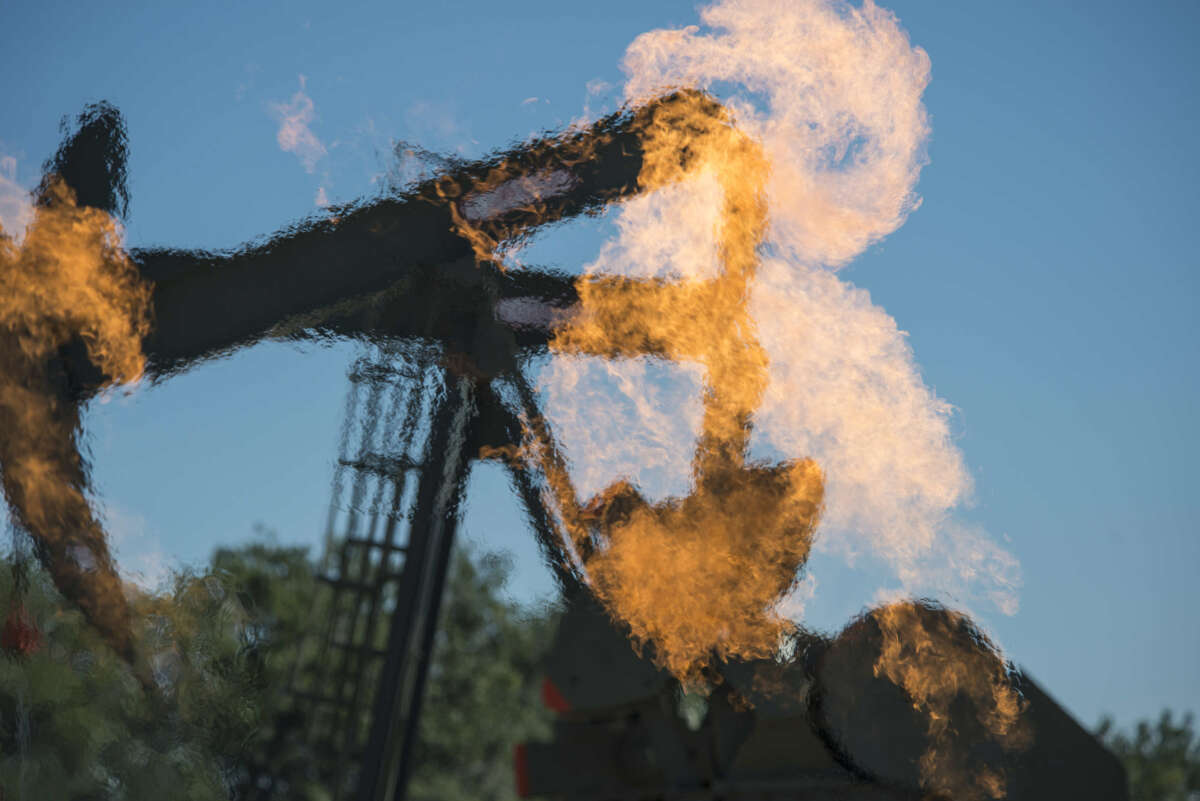Methane emissions are rising faster than expected, a new study has warned, and the surge is putting global climate goals at risk.
The study, published Monday in Frontiers in Science, found that methane emissions have risen quickly since 2006, with the growth rates for atmospheric methane seeing an “abrupt and rapid increase” in the early 2020s.
“The growth rate of methane is accelerating, which is worrisome,” lead study author and Duke University climate scientist Drew Shindell, told The Guardian. “It was quite flat until around 20 years ago, and just in the last few years we’ve had this huge dump of methane. It’s made the job of tackling anthropogenic warming all the more challenging.”
Methane is the second leading greenhouse gas heating the atmosphere and contributing to the climate crisis. It is 80 times more potent than carbon dioxide during the first 20 years after being emitted, but it also fades from the atmosphere much more quickly — in around 12 years rather than centuries. Methane emissions released between the industrial era and 2019 have caused 65% as much global heating as carbon dioxide, according to the new paper.
Methane emissions have spiked in recent years, reaching record levels in 2021 and 2022. The increase in atmospheric methane concentrations in 2021 was also the highest ever recorded. The growth rates in the early 2020s “far exceeded” predictions, and the situation is not expected to improve on its own.
“This study shows that emissions are expected to continue to increase over the remainder of the 2020s if no greater action is taken and that increases in atmospheric methane are thus far outpacing projected growth rates,” the authors wrote.
Methane is emitted primarily by leaks and flaring during fossil fuel production, animal and rice agriculture, and the decaying of organic matter. The authors considered what had caused methane production to spike in the early 2020s specifically, and concluded that the two main drivers were fossil fuels — primarily oil and gas production — and an increase in decomposition rates from wetlands as higher temperatures interacted with La Niña conditions in the tropics.
Despite the significant role that methane plays in accelerating the climate emergency, only around 2% of climate finance is dedicated to targeting it, and current policies only respond to around 13% of total methane emissions. Given the rising rates of methane growth, the authors argued that this must change.
“It is imperative to rapidly reduce methane emissions to reduce the accelerating climate damages so many people around the world are suffering,” Shindell said in a statement.
Why has the world dragged its feet on methane so far?
“The world has been rightly focused on carbon dioxide, which is the largest driver of climate change to date,” Shindell explained. “Methane seemed like something we could leave for later, but the world has warmed very rapidly over the past couple of decades, while we’ve failed to reduce our CO2 emissions. So that leaves us more desperate for ways to reduce the rate of warming rapidly, which methane [cuts] can do.”
Methane, Shindell told The Guardian, “is the strongest lever we can quickly pull to reduce warming between now and 2050.”
“There’s just such a rapid response to cutting it,” Shindell continued. “We’ve already seen the planet warm so much that if we are to avoid worse impacts we have to reduce methane. Reducing CO2 will protect our grandchildren — reducing methane will protect us now.”
Refusing to curb methane could also undermine efforts to reduce CO2: for every 50 megatons of methane that are not eliminated in keeping with low-warming projections, the remaining carbon dioxide budget is reduced by 150 gigatons.
The scientists outlined three “imperatives” for tackling methane:
- Reverse the rise in emissions;
- Make a plan to tackle CO2 and methane together; and
- Optimize methane-reduction plans and technologies for maximum effect.
To that end, the study authors developed an online tool that policymakers and other interested parties can use to gauge the effectiveness and economic benefits of different technologies and strategies.
“The benefits of methane mitigation nearly always outweigh the net costs,” Shindell said in a statement.
Each ton of methane emitted in 2020 caused between $470 and $1,700 in damages, without considering methane’s contribution to deadly air pollution. If that is taken into account, the true cost per ton could be $7,000 or more.
The most effective action a stakeholder can take to reduce emissions will depend on where they live and their position in society. For governments in countries with large fossil fuel industries, for example, the most important tools would be regulating production, offering incentives for companies to capture any methane, or charging the companies for emitting methane, the study authors argue.
For individuals, the most effective actions may be altering their consumption patterns or taking political action.
“People can make sure they avoid overconsumption of beef and dairy, and compost their organic waste whenever possible,” said Shindell in a statement.
“If it’s not possible where they live, they can vote for those who’ll create programs for composting in their towns. They can also vote for those who will make polluters pay for methane emissions rather than letting them profit while society picks up the tab for the damages they’re inflicting.”
48 Hours Left: All gifts to Truthout now matched!
From now until the end of the year, all donations to Truthout will be matched dollar for dollar up to $31,000! Thanks to a generous supporter, your one-time gift today will be matched immediately. As well, your monthly donation will be matched for the whole first year, doubling your impact.
We have just 48 hours left to raise $31,000 and receive the full match.
This matching gift comes at a critical time. As Trump attempts to silence dissenting voices and oppositional nonprofits, reader support is our best defense against the right-wing agenda.
Help Truthout confront Trump’s fascism in 2026, and have your donation matched now!
